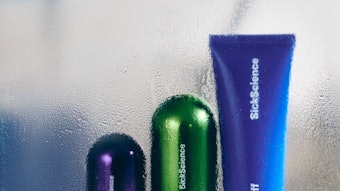Discussing the state of the beauty industry amidst current global trends, as well as opportunities and options for future growth within certain markets and industry categories, Euromonitor International analysts recently participated in a press briefing during the 2013 in-cosmetics event. On a panel that was moderated by Claudie Willemin, international director of skin care, sun care and hygiene, applied research, research and innovation with L’Oréal, IFSCC Praesidium member and president of Société Française de Cosmétologie; and Marc Pissavini, basic and applied research director with Coty; Irina Barbalova, Euromonitor’s global head of beauty and personal care research, and Nicole Tyrimou, Euromonitor beauty and personal care analyst, presented “New Beauty Power: The Cast for Tailored vs. Universal Solutions.”
Citing the strength of the prestige/premium market and the skin care and anti-aging categories, Barbalova noted that 2012 kept the growth pattern for the beauty industry, and even after a spectacular year in 2011, North America still managed to achieve close to 6% increase in premium value in 2012, according to Euromonitor data. “Total industry growth bettered that of the previous year and reached pre-recession levels. Despite the strong performance of the premium cosmetics category, overall growth was boosted by mass cosmetics globally, with positive prospects shown by staple categories such as oral care, deodorants, and hair care,” she explained.
Barbalova also noted that skin care continues to be the beauty industry’s largest category, followed by hair care, color cosmetics, fragrances, oral care, bath and shower, men’s grooming, deodorants, sets and kits, baby and child products, sun care and depilatories, respectively. And all those categories, with the exception of sun care, saw growth in 2011–2012 versus 2010–2011. In regard to sun care, one of the reasons it dropped was because it touches and becomes integrated into so many other categories, including skin care and color cosmetics. And, as Pissavini commented, “With sun care, you can’t mess with the efficacy, it always has to be the top and first priority.” However, secondary claims for sun care also include anti-aging, color and additional raw material elements.
Opportunities within the beauty market also are varying regionally. In the men’s market, for example, Barbalova noted that the toiletries category is big in Asia while shaving products are a larger focus in Latin America. For the Middle East, Africa and Latin America hair care is a significantly growing category, while North America is seeing openings for innovation in the color cosmetic, hair and skin care categories.
However, as skin care remains the beauty industry’s largest category, and innovation for it is driving much of the push forward in product development. Anti-aging continues to be the biggest skin care subcategory, but the marketplace for facial care makeup (which includes tinted moisturizers and BB/CC creams) offers the largest opportunity for value growth. And, as Pissavini noted, the development of such products is often a collaboration of many beauty R&D teams.
Moving ahead, the beauty industry is seemingly trying to follow two divergent paths, according to Euromonitor, both pushed by consumer demands and trends, and Euromonitor’s latest research also shows leading beauty companies are taking a more holistic view on products. This has also been driven by consumer demand becoming more complex in their expectations of product performance and benefits.
“Anti-aging is increasingly being associated with a wider portfolio of benefits,” explained Tyrimou. “Moisturization and sun protection are now expected in every product, thus added value has gone far beyond that. There is a greater alignment with enhancing the skin, rather than just treating wrinkles. Many of the new claims are about evening skin tone, brightening, illuminating and smoothing properties.”
Additionally, Barbalova noted that these trends aren’t just affecting product development for skin care. “Hair care is experiencing a transformation and is increasingly inspired by skin care in terms of ingredients, as well as adopting a similar multi-step routine approach to hair treatment,” she explained.
Multifunctional products are becoming mainstream, most epitomized by the BB and CC creams phenomenon. At the same time, the need for more personalized solutions and products targeting specific concerns are presenting further scope for innovation in this area. While multiple benefits are important even in targeted products, the overuse of multifunctionality and the BB/CC labeling of products could result in the blurring of the actual benefits and thus the ultimate brand credentials.
Meanwhile, the targeted trend will likely lead to more bespoke skin care products and services, including diagnostic offerings like the Sephora-Pantone color match collaboration, the Ioma bespoke skin care offerings in Harrods, and The Organic Pharmacy’s DNA test from GeneOnyx, which uses that information to develop equivalent products. Additionally, specific product types (including tools), targeted function area (neck, chin, décolleté), focused concerns with targeted solutions (for acne, wrinkles, dryness, and more), innovative application methods (such as droppers and syringes) and age segments are also bringing more to the targeted products’ plate.
“There seems to be room for both of these divergent trends. While both targeted and multifunctional products are equally sought after by consumers, the need for preserving and promoting the specialized features of a product should remain key. Consumers need to be able to relate to a product that provides them a solution for their individual needs,” concluded Barbalova.










